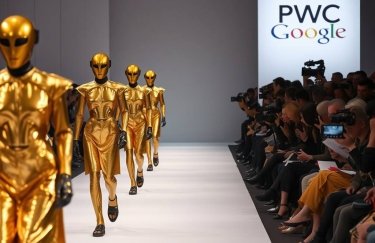
I’ve been thinking about The Hateful Eight a lot lately.
There’s no real good reason for this, except that the movie, which came out in 2015 and is Quentin Tarantino’s most recent film, takes place in a kind of miserable, snow-covered hell, making it one of those non-Christmas films that still feels most appropriate to break out at the end of the year.
The movie was one of Tarantino’s lowest earners at the box office, and it hasn’t had the long tail that many of his other films have enjoyed in the cultural conversation. If Tarantino has ever made a movie that’s been largely forgotten, it’s The Hateful Eight.
And yet I can’t seem to shake it, over three years after I first saw it.
I didn’t think much of the movie at the time. Filmed largely on one set, where eight characters gab and gab and gab at each other until the bloodshed begins, the nearly three-hour film is an endless series of provocations by Tarantino that toy with big dividing lines around race, class, and especially gender in America, without tipping its cap toward what it really thinks.
Related
The Hateful Eight, Quentin Tarantino’s new film, is a deeply interesting failure
It’s a nasty, ugly movie, and it’s all but impossible to tell if Tarantino is reveling in that nastiness and ugliness (which he does from time to time, as in his 2007 movie Death Proof) or depicting it so that we might reflect on our own nastiness and ugliness (which he did in his 2012 movie Django Unchained, whose core goal seems to be forcing white Americans to confront their ancestors’ role in the institution of slavery).
The Hateful Eight is just mean, and it feels like the work of someone who looked around at America and concluded that it was a land full of angry, spiteful people who would be more willing to burn their own lives to the ground than admit either their own sins or the sins of their country. It’s an apocalyptic story, even though it’s set in the Old West, about a country trapped in a cabin with itself and tilting toward murder.
In 2015, it played like Tarantino sticking his tongue out at you from the movie screen. But in 2018, it plays like a prophecy I missed at the time.
The two years since the 2016 election have been disastrous for the continued employment of cultural critics and journalists
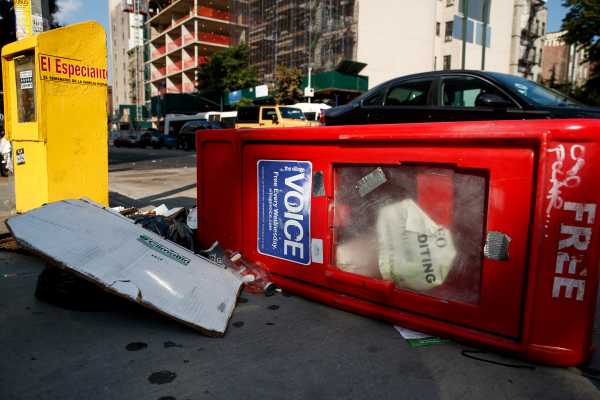
The last two years have not been particularly great for cultural criticism and culture writing more generally. The twin pressures of a political situation that has a tendency to gobble up all available media oxygen and the increased centrality of review aggregation sites like Rotten Tomatoes and Metacritic (to the degree that movie studios routinely blame bad Rotten Tomatoes scores for their box office failures) have pushed more and more media companies to cut back on culture writing.
Often, these cuts have come to pass through the outright downsizing of culture-writing staffs. Buzzfeed largely dismissed its more criticism-focused writers in late 2017 (though it still employs the terrific critic Alison Willmore) and its culture-oriented podcast team in 2018. In July 2018, many staff members of The A.V. Club, perhaps the internet’s longest-running outlet focused solely on pop culture, took buyouts as part of an ongoing effort by the site’s corporate parent, Gizmodo Media Group, to trim costs. In October, veteran music publication The Fader laid off its most senior employees.
But some publications simply ceased to publish culture writing altogether, when they weren’t going out of business entirely. In particular, independent newspapers like the Village Voice, an important incubator of tremendous cultural writing for decades, shuttered completely, while its connected Voice Media has ceased film and TV coverage entirely as of December 31, 2018. Similarly, the website Mic has more or less been stripped for parts.
The above is not intended as an exhaustive list. Many, many more publications have cut cultural journalism either in part or in whole. And these job losses are often doled out piecemeal — a layoff here, or a position left unfilled after a departure there. The larger picture can be easy to miss unless you happen to notice culture writers announcing they’ve been laid off on Twitter or are a freelancer trying to pitch to an ever-shrinking pool of outlets. But the pool is shrinking, drip by drip.
It would be one thing if some publications were cutting cultural journalists, but those cultural journalists were still able to find jobs elsewhere. But over the past two years, in numerous discussions I’ve had with journalists at all levels of the cultural journalism ecosystem, it’s become more and more clear that the jobs simply aren’t there.
If you look beyond publications that have intentionally reduced the number of culture writers on their staffs, you’ll find many that have curtailed hiring around culture writing — often in favor of expanding political coverage. They’ve either mostly held pat with culture hiring since the 2016 election, or they’ve opted not to fill positions that opened because someone left, shifting those resources toward political writing.
That’s not to say that no one has hired culture writers of late. But for the most part, in 2017 and 2018, from major newspapers to tiny websites, anyone with enough money to hire new journalists usually wasn’t putting it toward an expanded culture section.
On the one hand, I get this. If I were in charge of a major publication, I would probably be hiring political reporters, too. But on the other hand, cultural criticism is important — vitally so. Sure, it’s how I earn a paycheck, but long before I got into this line of work, great cultural journalism gave me other ways of looking at and understanding the world, which is core to journalism’s mission statement. We need cultural criticism not just to tell us which movies to go see and which ones to avoid, but to tell us things we already knew but didn’t know how to express. If reporting can explain the world to us, cultural criticism can explain us to us.
How our pop culture can offer a dim vision of where we might be headed, explained by the rise of Nazism in the early 20th century
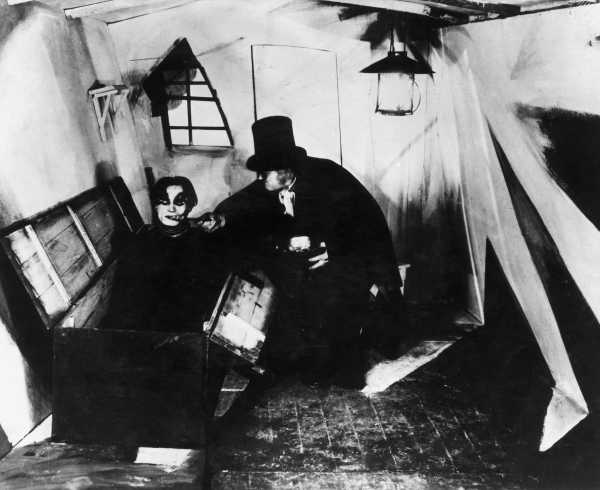
One of the foremost critical texts ever written is Siegfried Kracauer’s From Caligari to Hitler. Kracauer, a film scholar and critic, escaped his native Germany for France as the Nazis rose to power, then escaped France for the US in early 1941, after the Nazis had conquered the country.
Kracauer is associated with the Frankfurt School, a group of Marxists who attempted to tackle questions of how better to build societies, after finding the various structures proposed in the early 20th century sorely lacking (this is an impossibly brief summary, but if you’re interested in the details or just writing and thought in general, you should read more about the Frankfurt School — try the solid history Grand Hotel Abyss by Stuart Jeffries). But From Caligari to Hitler is concerned less with questions of how to build societies than it is with how societies build and conceptualize themselves via the dream logic of movies.
Kracauer starts from a seemingly self-evident premise: German expressionist filmmakers (like Robert Wiene, who made the 1920 classic The Cabinet of Dr. Caligari, which gives the book its title) created startlingly artistic statements unlike any others in the rest of the world, shot through with a dark, foreboding sense of impending doom, which paired well with the rise of fascism slowly bubbling away in German society in the ‘20s and early ‘30s.
But Kracauer goes one step further, positing that both these films and the oft-forced cheerfulness of the films that were made after numerous central figures in expressionist movements departed for Hollywood are early psychological manifestations of something within German culture that made Nazism inevitable. He argues that films aren’t just documents of a culture’s values and chosen narrative tropes, but a kind of document of a culture’s subconscious, one that filmmakers often don’t know that they’re making.
Kracauer has a couple of explanations for why he thinks films are so vital to understanding a culture’s psyche, both of which could presumably be applied to television, video games, and maybe even pop music as well.
The first is that while there are always directors or producers “in charge” of a given film, it is inevitably the work of many, many artists — and the more people involved, the more accurately it reflects a culture’s buried hopes. Even if the corporations that make and release films are mostly interested in turning profits, Kracauer suggests, the best way for them to do so is to reflect things that a culture either badly wants to be true or deeply identifies with on some level.
The second is that films address themselves to “the anonymous multitude.” Writes Kracauer in his introduction:
Kracauer spends the rest of his book providing a long, in-depth overview of German cinema from its inception to the reign of the Nazis, from pre-World War I examples to filmmakers like Leni Riefenstahl. But his central thesis holds true: Every film, even one of more marginal success, tells you something about the culture that produced it, and the more knowledge you have of how films are made, of how they can create false narratives we desperately want to be true, and of how they intersect with other forms of philosophy and thought, the more you can understand how they serve as signposts toward whatever is to come next.
Kracauer’s methods can be applied to our current pop culture — and the most astute cultural critics often do so
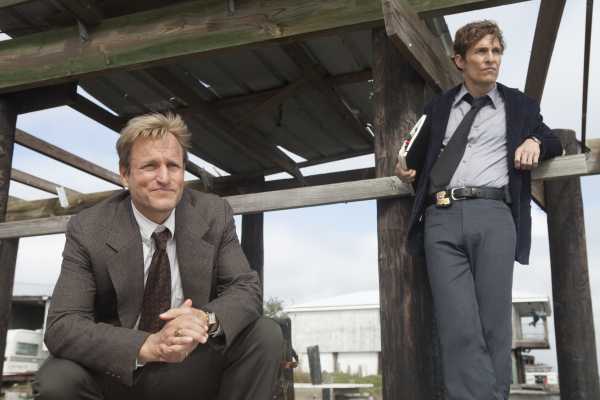
Kracauer, of course, was writing his book after the end of World War II. Nazism had been defeated, and German cinema was knocked back by the end of the war as much as everything else in the country. And his timing exposes one of the issues with these sorts of psychological readings — they predict the future, but only if you know what the future looks like already. Which is to say: They are often more useful in hindsight.
I suspect this is why I’ve been thinking so much about The Hateful Eight and its provocative statements about the dark heart of America as 2018 comes to a close; I’ve also been thinking about American Sniper and True Detective and Girls and a host of other entertainments that seemed to herald some sort of budding culture war in the first half of the 2010s with the discussions and debates they started, even as the sleek self-satisfaction of left-leaning media figures in those same years insisted that America was inevitably going to keep pushing further leftward, just very gradually. Demographics had solved everything!
What is important to note here is that the psychologically predictive elements of the works listed above (and numerous others — one could make an argument of this sort surrounding the superhero films of Marvel and DC’s movie studios, for instance) exist independent of their actual quality. The popular understanding of what a critic does is that a critic tells you whether something is good or bad. But that is the least interesting part of a critic’s job, when all is said and done, because two critics can see the same movie, agree largely on its strengths and flaws, then weight them very differently in their heads.
No, the role of a critic is to pull apart the work, to delve into the marrow of it, to figure out what it is trying to say about our society and ourselves. You can love a work and think its politics are deeply problematic; you can believe something is terrible yet offers some accidentally acute insights about the way the world works.
To choose two examples from my list above: I think the second season of True Detective (which was released in the summer of 2015) is an almost unwatchable misfire, a cluttered mess that never once shows any understanding of how to tell a complicated crime story in the time allotted to it. But it’s also one of the more insightful series of its particular generation when it comes to questions of how broken capitalist systems turn people into literal spare parts, exploitable cogs that can be hammered into place and treated like shit because they have no real value as human beings, just as pieces of the larger system. In this fashion, it anticipates more recent TV shows like Westworld and The Handmaid’s Tale, in addition to so many debates we’ve had around politics and populism since it aired.
Girls, meanwhile, remains one of my favorite shows of the decade, but in 2018, it’s much harder to read as anything other than solipsistic. In 2012, when the series debuted, it was easier for at least some critics (myself included) to defend the way Girls’ protagonists were almost fatally blinkered when it came to the world around them.
Over the course of the show’s six seasons (concluding in 2017), the characters did “grow up,” but their growing up involved so little actual struggle or conflict that it seemed as if the show was unaware of any person who existed outside of online comments sections or the pages of the New Yorker. Its greatest blinders were always to its own characters’ economic and racial privileges, and while it was sometimes aware of that, it was too often not.
Related
Duck Dynasty and Girls, from beginning to end, reflected a splintered America
And that unawareness is an important puzzle piece in a larger picture of how everything that America would go through in 2016 and beyond was already being stretched to a breaking point in pop culture, which embraced antiheroes who nonetheless exuded a kind of masculine code of ethics all over the place, a kind of dim harbinger of the man in the Oval Office.
None of this is to say that all culture writing should be about Donald Trump. Far from it. That particular rag has been wrung dry. Indeed, many of the most popular works of the past year, both commercially and critically, have been about building better worlds, about utopian ideals, about how great it would be to live in Wakanda (so long as you were in the ruling class), or about how Gilead or the afterlife of The Good Place must be radically altered to create a new, more just way of living.
Once we know where we’re going, all of this will make more sense. But culture writing isn’t about predicting the future — it’s about predicting the present.
Culture writing can help better explain a vast, sometimes contradictory society
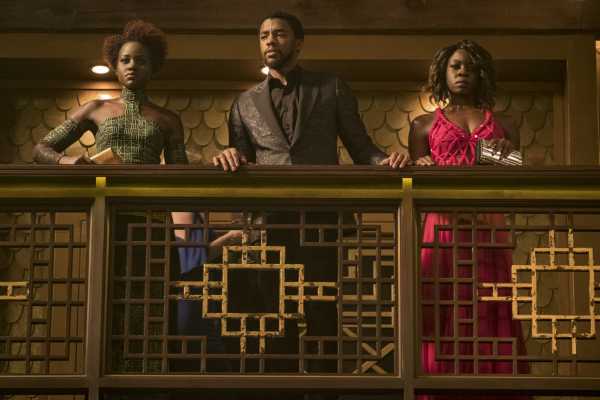
When I make the above argument in favor of cultural criticism to journalistic colleagues who deal in what might be dubbed the “hard sciences” of journalism — data-driven, boots-on-the-ground reporting — I am always aware that it sounds just a little fantastical. And there have been many times that I and my critical brethren have just plumb missed something burbling away in the national subconscious. Few critics looked at the pop culture of the early 2010s and said, “Yep, a culture war’s brewing,” even if it seems blindingly obvious in hindsight.
You can attribute at least some of missing that particular boat to the geographical concentration of cultural critics in New York and Los Angeles (where I live). The homogeneity of critics — too many of us are white, too many of us are male, and too many of us live on one of the coasts — is a real problem that needs to be corrected sooner, rather than later, if we are to better understand the dreams a multicultural nation is having, sometimes in parallel and sometimes in bloody intersection.
Perhaps this is why The Hateful Eight looms so large for me even still. It is a movie that juts America’s lofty ideals right up against its bloody reality, a movie that understood better than most that the precipice we all stood on in 2015 was very different from the one we thought we were on. It’s an ugly movie, sure, but maybe it’s an ugly world. Maybe it was telling the truth, and hoping otherwise is a fool’s errand. It embraces contradiction, in a way that still unsettles.
And yet it is not a final answer, and no review of it will ultimately be a final answer. The movie’s meaning — all movies’ meanings — changes with time, as we change with time. No one piece of culture writing can explain us in all our contradictions. That’s why we need more, not less, of the form. There is probably too much stuff out there to ever get any accurate read of exactly what America is worked up about now — except, maybe, in broader trend pieces — but every new film, TV show, book, game, and album is a new brick in the wall, a new argument to be made.
We’re a country of angry, outsized reactions to any fanboy project that dares cast a woman or person of color in its lead, but also one that makes movies like Black Panther and Crazy Rich Asians and even BlacKkKlansman successful box office hits. We’re a country of Aquaman and The Mule and On the Basis of Sex — to choose three radically different movies, with very different political views, that were sold out for evening showings at my favorite multiplex a few nights ago. We’re a country where everything from The Big Bang Theory to The Good Place, from Game of Thrones to This Is Us, can be a major hit.
The fact that criticism is, on some level, the work of those of us who sit in a dark room and try to interpret dreams will probably always feel a little suspect to some of my colleagues, but it shouldn’t. It is just as deeply reported, just as astutely interpreted, just as rigorously thought through as any other form of journalism, just in a very different form, one that can sound fantastical but one that has centuries of thought and theory backing it up, all the way back to ancient Greece.
Cultural criticism isn’t necessary just so we know what movie to see when we head to the multiplex. It’s necessary because it is part of how we begin to understand both ourselves and this weird, vibrant, crumbling country we are all a part of.
Better than any data set I can think of, it tells us where we’ve been, where we are, and maybe even where we’re going. It’s vital to any publication, to any newsroom, and to any well-rounded news diet. Now, in 2019, let’s see even more of it.
7 great pieces of culture writing from 2018
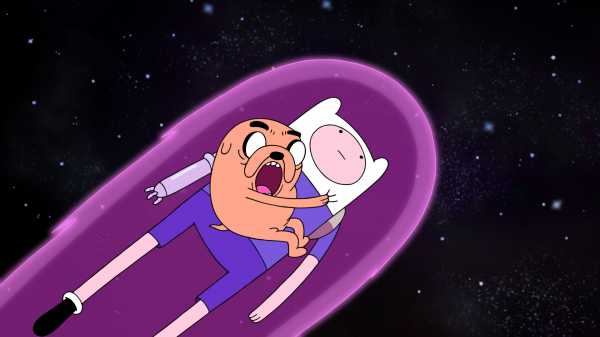
If you’re excited to explore some great culture writing from the past year, here are seven of my favorite pieces (one of which isn’t in written form at all) digging into pop culture in all its forms.
“Ten Years Later, The Dark Knight and its vision of guilt still resonate,” Bilge Ebiri for the Village Voice
It’s hard to write a retrospective on a movie or TV show everybody has seen, but Ebiri digs deep into what The Dark Knight said about the late George W. Bush era, then shows how the movie pointed to what was to come.
“2018’s big horror film trend: inherited trauma,” Britt Hayes for ScreenCrush
I pitched this piece, then watched as Hayes wrote a far better version of it than I could have mustered. It’s a great example of noticing a trend in entertainment, then following it to its logical conclusion.
“Why I’ve had trouble buying Hollywood’s vision of girl power,” Alison Willmore for Buzzfeed
Pop feminism was everywhere in 2018, and Willmore starts from a Ruth Bader Ginsburg action figure to dissect just why so much pop feminism feels so empty and consumerist.
“Hulu’s The Bisexual is here to make every queer a little bit uncomfortable,” Heather Hogan for Autostraddle
This is, ostensibly, just a review of a TV show, but it’s also so much more, pushing past merely telling you whether the show in question is good or not to interrogate Hogan’s own responses to it.
“Adventure Time finale review: One of the greatest TV shows ever had a soulful, mind-expanding conclusion,” Darren Franich, Entertainment Weekly
Sometimes, writing critically just means celebrating something you loved. Franich offers a sweetly tempered eulogy to a beloved TV series in this extended breakdown of the finale.
“CBS’s toxic culture isn’t just behind the scenes. It’s in the shows that it makes,” Kathryn VanArendonk for Vulture
VanArendonk uses deep knowledge of CBS crime procedurals to point to how a culture of sexual harassment was allowed to flourish not just at the company but in the shows it put on the air.
“Hereditary hot take,” May Leitz (aka NyxFears) for YouTube
Leitz’s deep dive into Hereditary genuinely changed how I thought about one of my favorite movies of the year and made me appreciate it even more. To say more would be to spoil her reading, but the video essay is peppered with evidence from the film itself.
And, of course, if you’re still looking for great culture writing to read, check out what we publish here at Vox, from Aja Romano on the history of Bert and Ernie as queer icons, to Alissa Wilkinson’s beautiful review of Eighth Grade; from Alex Abad-Santos’s thoughts on the Victoria’s Secret fashion show in the time of corporate wokeness to Constance Grady on why so many TV shows right now are about people trying to be good. (And, okay, you can read my Gritty explainer if you like.)
Sourse: vox.com

